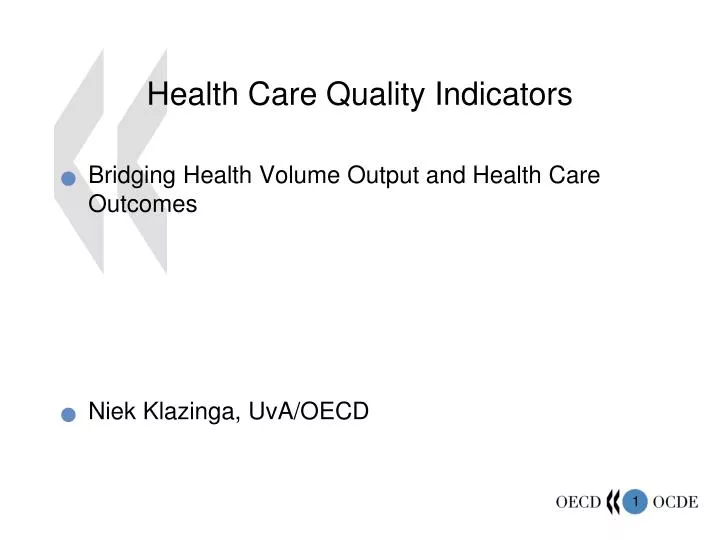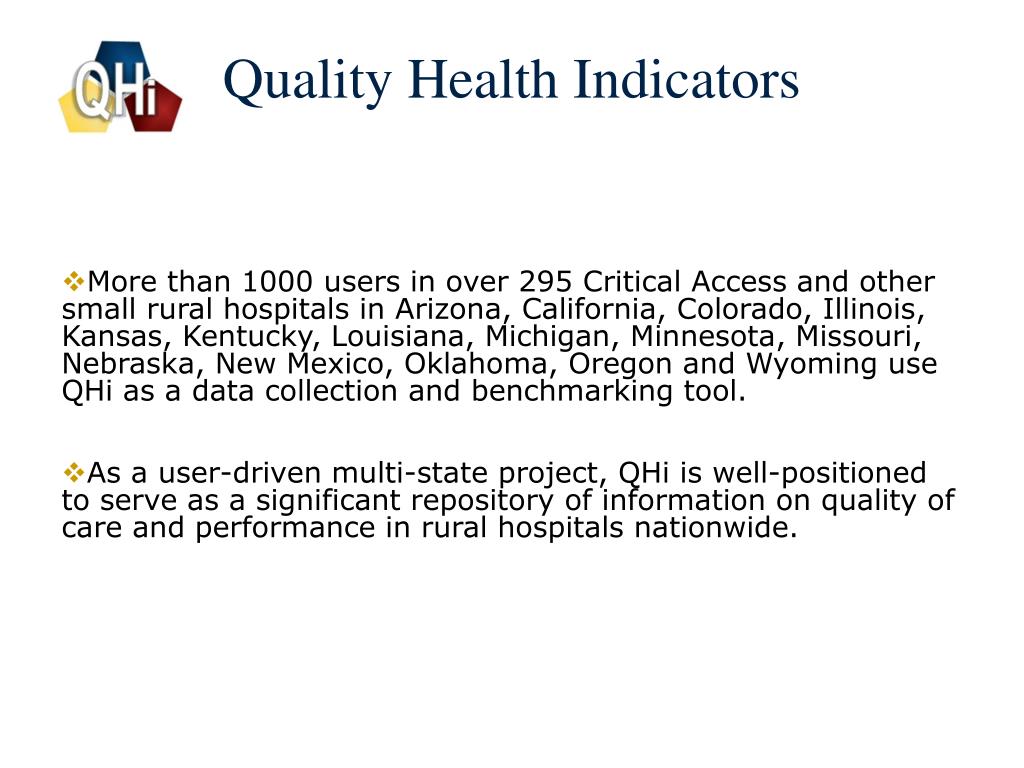Table of Content
This study was a cross-sectional mixed-methods analysis of in-depth multimodal data from 31 POs affiliated with 22 purposefully selected health systems in 4 states. This study offers a provisional framework that can help in structuring thinking, policy and practice. By outlining the range of domains relevant to remote antenatal care, this framework is likely to be of value in guiding policy, practice and research. The objective of this paper is to review evidence on survey administration strategies to improve response rates and representativeness of patient surveys. Exploring how often inquiries turn into admissions will help you answer various questions.
This page contains brief descriptions of each measure type and how the data for that measure is calculated. TheDownloadssection below provides links to technical documentation, tables identifying which Home Health Quality Measures are risk-adjusted and reported publicly, and additional resources. Evidence shows that leaders who implement the patient-centered medical home care model encounter challenges in driving change. Understanding which changes and quality improvement practices further implementation is essential. The Agency for Healthcare Research and Quality held a research meeting on using Consumer Assessment of Healthcare Providers and Systems (CAHPS®) data for quality improvement and evaluating such efforts.
What Parents Have to Say: Content and Actionability of Narrative Comments from Child HCAHPS Survey
We would, in effect, be carrying out a targeted and focused sampling of the care provided. So rather than developing long lists of indicators to assess every aspect of care, we should ask how many indicators are needed to make a reasonable assessment of a specific underlying construct. If the indicator set covers multiple constructs , then we should look for redundancy within rather than across these domains, as we still need content validity for each of these constructs. The purpose, broadly speaking, of all indicators is to monitor and hopefully improve the quality and value of care provided in the health system.
In January 2015, the NQF endorsement for the CAHPS Home Health Care Survey was renewed. A multi-stage process to develop quality indicators for community-based palliative care using interRAI data. Risk adjustment is not considered to be necessary for process measures because the processes being measured are appropriate for all patients included in the denominator . Risk-adjusted outcome measures are identified in theHome Health Outcome Measures Table that is available in theDownloadssection below. The risk adjustment methodology, using a predictive model developed specifically for each measure, compensates for differences in the patient population served by different home health agencies. Insights from the Development of quality indicators for in-home aged care project have been drawn upon to support this work.
Evaluate & CompareHealth Care Facilities
To put it simply, revenue is income that comes into your agency from paying clients and can help you determine how the business is doing. This KPI shows the number of events in a specific period where your home agency has not met the standard of service due to missed or late home visits, device failures, lack of communication, or failure to bring necessary items. However, to be able to measure and track business objectives, agencies need a few KPIs. Negative events like potentially avoidable hospitalizations or emergency department care, or a lack of such negative events. The first home health claim that starts an episode of care for a patient, and, as appropriate, the claim for the period after discharge.
You can easily track this KPI by calculating the number of times a caregiver was late, skipped the visit, or did not provide care following the plan. It's important to keep track of this KPI as it shows the quality of service that you provide to your client base. This measure assesses the Medicare spending of a home health agency, compared to the average Medicare spending of home health agencies nationally for the same performance period.
Events
If an agency wishes to strengthen its processes and ask its staff to hit specific targets, it also has to measure their efforts. Employee motivation will be hard to maintain if there is no way to measure whether they have succeeded or not. Percentage of patients who require emergent care from a hospital, doctor, or outpatient department/clinic for any type of emergency. For more information about these process measures, please refer to the Home Health Process Measures Table, which can be located via the link to Home Health Measures Tables in theDownloadssection below.

This paper presents evidence that the quality of health care interactions changed in important ways during the early months of the Covid-19 pandemic. We surveyed children's hospital leaders and staff about their use of Child HCAHPS for QI, including measures from other studies. We compared scale and item means for leaders and staff and compared means to other studies. In 2008–2017, 15–18% of U.S. primary care practices sought or maintained patient-centered medical home recognition. We interviewed a sample of 105 of these practices to determine why patient experience surveys were chosen. Depression, PTSD, traumatic brain injury, and substance use disorders interfere with veterans' employment, family life, community engagement, and well-being.
Health Care Quality Assessment
As home health quality measures reports are public, they can compare the results with other providers. HH QRP measures derive from three data sources, Outcome and Assessment Information Set assessment, Medicare fee-for-service claims, and the Consumer Assessment of Healthcare Providers and Systems (CAHPS®) Home Health Care Survey. OASIS and HH CAHPS data collection and reporting are requirements for providers participating in the HH QRP. Medicare FFS claims data are submitted by HHAs to receive payment for services provided for Medicare FFS patients. The project focused on existing services provided in the Commonwealth Home Support Programme and Home Care Packages Program.

Yet, any monitoring activity has a cost, both visible in the form of resources consumed in producing them and, largely invisible, in terms of staff time consumed in recording and submitting the information, unless it can be derived directly from electronic health records. The principle, for instance, of consuming no more than 1% of a provider organisation’s budget on indicator collection might do a great deal to focus indicator sets on issues that are of real value to multiple stakeholders. Patients and their families may use publicly available quality indicators to inform their choice for a particular provider, but will also rely on other sources that they may well regard as more important than formal indicators. Providers may use quality indicators internally to monitor safety and to support their efforts to improve care; they may also benchmark their care in relation to similar institutions. All these users want to measure the quality of care, but each group faces different challenges and poses different questions.
They may therefore differ in what they consider most relevant and which combination of indicators will most accurately measure that. An indicator set must therefore be developed with particular user groups in mind and may need to be adapted to meet the needs of different groups. Organisations that publish indicator sets acknowledge, and indeed advocate, that the indicators are used by different groups with different priorities. While all these groups are broadly concerned with the quality of care provided, they may use indicators for very different purposes and for answering different questions.6 7 We therefore cannot assume that a particular indicator set will meet the needs for all users equally well. Agencies that participate in the Consumer Assessment of Healthcare Providers and Systems program can gain valuable insight into the client satisfaction and identify their improvement when this KPI is tracked over time.

Changes cannot of course be too frequent; otherwise, the adjustments to the set will become burdensome and tracking change over time will become more difficult. The relationships between these different constructs must also be considered; for instance, care may be efficient, but not equitable, or conversely equitable but not efficient. In practice, however, most organisations simply produce long lists of specific indicators with no indication of what construct these intend to measure, or whether the set is valid to coherently measure that construct. However, this process will also greatly clarify the construct and ensure that each individual indicator does contribute to the overall measurement objective. Most HH QRP measures are assessment-based measures created using the OASIS assessment tool data. OASIS-based measures are created using counts of HH quality episodes and can be either process our outcomes measures.
A set of standards can help identify providers who serve veterans and deliver high-quality care. Such analysis can help you determine whether there is anything in the process that makes the prospective clients give up using your agency's services. By tracking KPIs for your primary goals, you will know if your team is reaching home health productivity benchmarks, and you can implement incentives based on their achievements.

The data collected by tracking KPIs provides statistics and enables a home healthcare agency to analyze its progress over a specific time, compare it to its industry peers and look for ways to improve its performance. The National Quality Forum , a multistakeholder organization established to standardize health care quality measurement and reporting, has endorsed several consensus standards for skilled home health services. Process measures evaluate the rate of home health agency use of specific evidence-based processes of care. The HH process measures focus on high-risk, high-volume, problem-prone areas for home health care. These include measures pertaining to all or most home care patients, such as timeliness of home care admission.
Key performance indicators are quantifiable or measurable values that reveal whether an organization is accomplishing its goals. Percentage of patients needing emergent care for wound infections or deteriorating wound status. Technical documentation for calculating potentially avoidable event measures can be accessed via the link to Technical Documentation of OASIS-Based Measures in theDownloadssection below. TheDownloadssection also has a link for the Outcome-Based Quality Monitoring Manual which contains additional information about the PAE measures. For a list of the potentially avoidable event measures, please refer to the Home Health PAE Measures Table, which can be located via the link to the Home Health Measures Tables in theDownloadssection below. If you wish to reuse any or all of this article please use the link below which will take you to the Copyright Clearance Center’s RightsLink service.

Despite efforts by insurance companies and other payers to move toward compensating physicians based on the quality and value of care they provide, most physicians employed in group practices owned by health systems are paid primarily based on the volume of care they provide. Drawing upon decades of experience, RAND provides research services, systematic analysis, and innovative thinking to a global clientele that includes government agencies, foundations, and private-sector firms. Over time, it may indicate whether your agency is understaffed, leading your caregivers to burnout and reducing the quality of service, or overstaffed, causing too high overhead expenses. Calculate this KPI by dividing the number of clients that stopped services during a specific period by the total number of clients with the agency during the same time period.

No comments:
Post a Comment